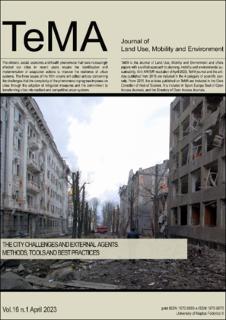| dc.contributor.author | Garau, Chiara | |
| dc.contributor.author | Annunziata, Alfonso | |
| dc.contributor.author | Yamu, Claudia Hedwig | |
| dc.contributor.author | D`Orlando, Dario | |
| dc.contributor.author | Giuman, Marco | |
| dc.date.accessioned | 2023-06-20T11:51:08Z | |
| dc.date.available | 2023-06-20T11:51:08Z | |
| dc.date.created | 2023-05-02T12:28:54Z | |
| dc.date.issued | 2023 | |
| dc.identifier.issn | 1970-9889 | |
| dc.identifier.issn | 1970-9870 | |
| dc.identifier.uri | https://hdl.handle.net/11250/3072289 | |
| dc.description.abstract | Starting from the Late Republican and First Imperial ages, the Roman Mediterranean has seen the development and transformation of urbanised areas due to the newly gained stability conferred by the so-called Pax Augusta. This phenomenon has significant consequences in transforming pre-existing urban structures and establishing a large number of newly founded urban areas. This study aims to address a gap in the existing literature by developing a method to analyse the configuration of historical urban sites to understand the social and cultural antecedents of the transformation and development of urban areas in the Roman era. The study builds on Space Syntax theories and techniques to develop an analytical protocol that combines syntactical analysis and statistical analysis to measure and compare spatial, visual and social relationships in four urban Roman sites in the Mediterranean. The selected areas of study are the urban sites of Nora and Cosa in Italy, of Timgad in Algeria and of Thuburbo Maius in Tunisia. The study areas include planned urban sites constituted by a grid structure (Cosa and Timgad) and cities with continuity of life (Nora and Thuburbo Maius) formed by an organic inspired spatial layout. The study significantly contributes to archaeology and urban studies by proposing a combination of methods that associates distinct analytical techniques to investigate the large-scale configurational properties of historical urban environments whose spatial structure and, therefore, social logic have been only partially explored. | en_US |
| dc.language.iso | eng | en_US |
| dc.publisher | University of Naples "Federico II" | en_US |
| dc.relation.ispartofseries | Tema. Journal of Land Use, Mobility and Environment; | |
| dc.rights | Navngivelse 4.0 Internasjonal | * |
| dc.rights.uri | http://creativecommons.org/licenses/by/4.0/deed.no | * |
| dc.title | Investigating the socio-spatial logic of historic urban areas through space syntax. A comparative analysis of the Roman towns Cosa, Nora, Timgad and Thuburbo Majus | en_US |
| dc.type | Peer reviewed | en_US |
| dc.type | Journal article | en_US |
| dc.description.version | publishedVersion | en_US |
| cristin.ispublished | true | |
| cristin.fulltext | original | |
| cristin.qualitycode | 1 | |
| dc.identifier.doi | https://doi.org/10.6093/1970-9870/9469 | |
| dc.identifier.cristin | 2144687 | |
| dc.source.journal | Tema. Journal of Land Use, Mobility and Environment | en_US |

